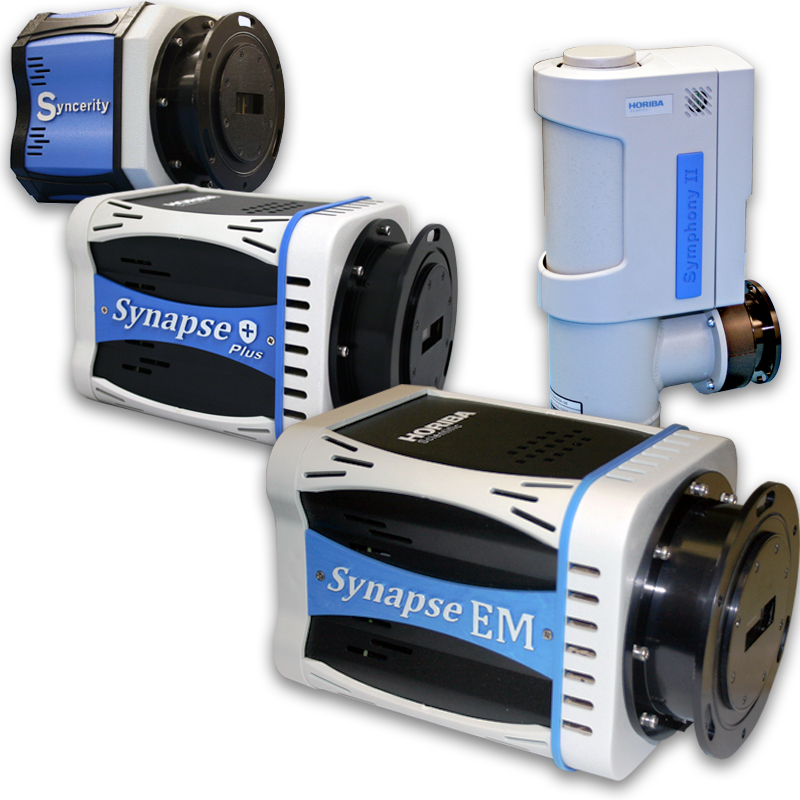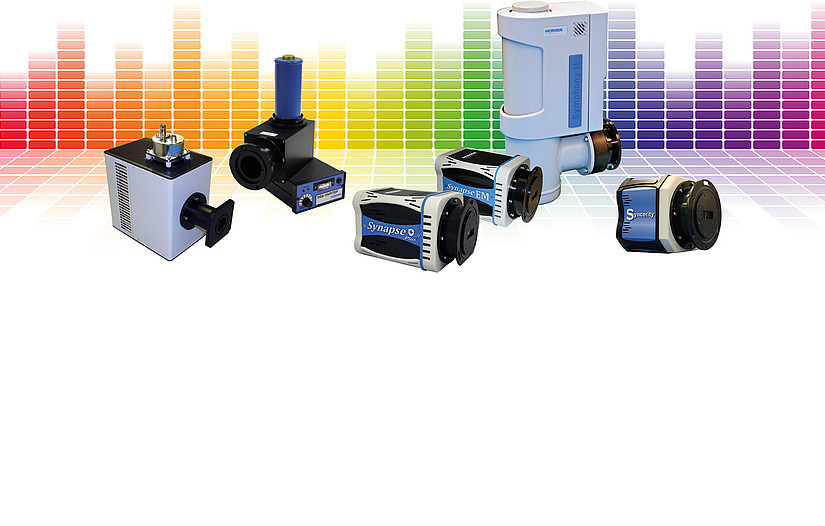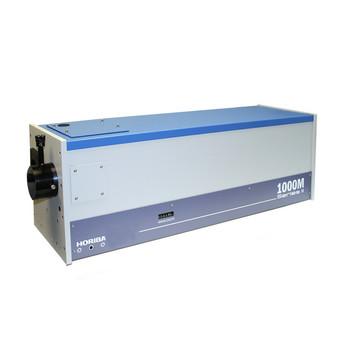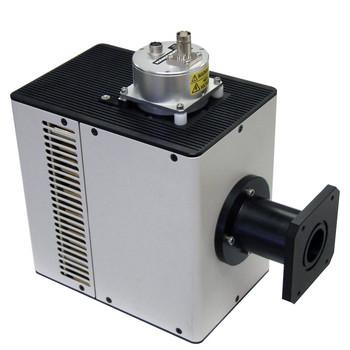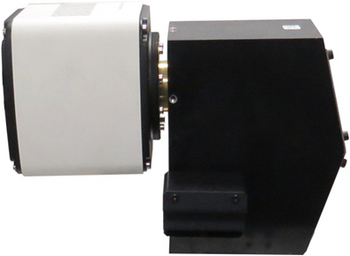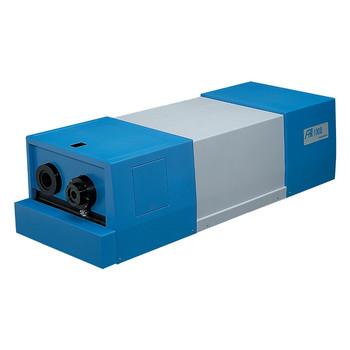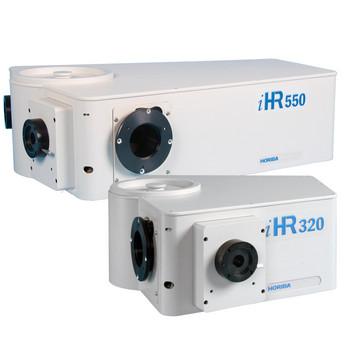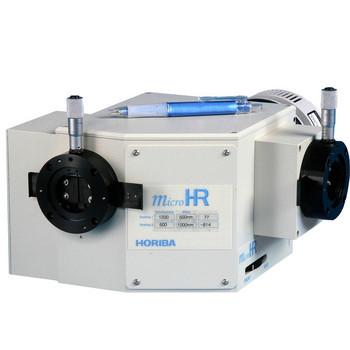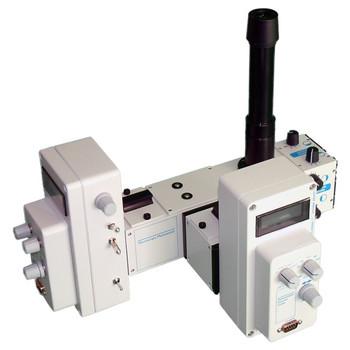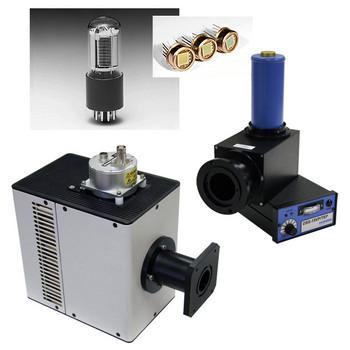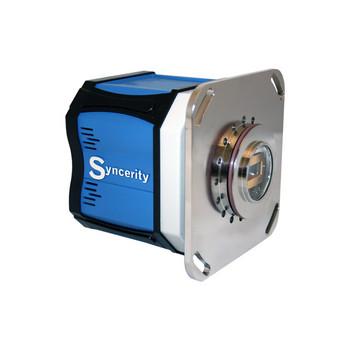CCDs
Quantum Efficiency by type of CCD
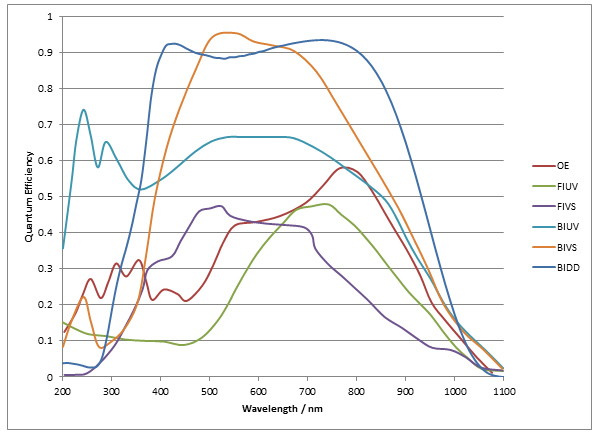
*OE- open electrode, FIUV- front illuminated UV enhanced, FIVS- front illuminated visible, BIUV- back illuminated UV enhanced, BIVS- back illuminated visible, BIDD- back illuminated deep depletion
Selection of all HORIBA Spectroscopy CCD’s
| Cooling | Type* | Peak QE | Array Dimension | Pixel Size |
|---|
Syncerity
 | TE -60°C | OE | 58% | 1024 x 256 | 26µm x 26µm |
TE -50°C | BI UV-VIS | 78% | 2048 x 70 | 14µm x 14µm |
SynapsePlus High Speed CCD
 | TE -80°C
-95°C with optional external cooling | OE | 56% | 1024 x 256 | 26µm x 26µm |
FIVS | 47% | 2048 x 512 | 13.5µm x 13.5µm |
FIUV | 48% | 2048 x 512 | 13.5µm x 13.5µm |
BIVS | 95% | 1024 x 256
2048 x 512 | 26µm x 26µm
13.5µm x 13.5µm
|
BIUV | 75% | 1024 x 256
2048 x 512 | 26µm x 26µm
13.5µm x 13.5µm |
BIDD | <90% | 1024 x 256 | 26µm x 26µm |
Synapse CCD
 | TE -75°C
-95°C with optional external cooling |
FIVS | 56% | 512 x 512 | 24µm x 24µm |
BIVS | 95% | 512 x 512 | 24µm x 24µm |
BIUV | 75% | 512 x 512 | 24µm x 24µm |
Symphony II CCD
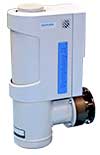 | LN2-133°C | OE | 58% | 1024 x 256 | 26µm x 26µm |
FIVS | 56% | 1024 x 256
2048 x 512 | 26µm x 26µm
13µm x 13µm |
FIUV | 58% | 1024 x 256
2048 x 512 | 26µm x 26µm
13µm x 13µm |
BIVS | 95% | 1024 x 256
2048 x 512 | 26µm x 26µm
13µm x 13µm |
BIUV | 75% | 1024 x 256
2048 x 512 | 26µm x 26µm
13µm x 13µm |
BIDD | 95% | 1024 x 256 | 26µm x 26µm |
*OE- open electrode, FIUV- front illuminated UV enhanced, FIVS- front illuminated visible, BIUV- back illuminated UV enhanced, BIVS- back illuminated visible, BIDD- back illuminated deep depletion
UV-VIS-NIR EMCCDs
Quantum Efficiency by type of EMCCD
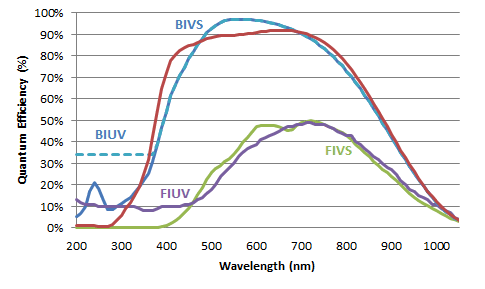
*FIUV- front illuminated UV enhanced, FIVS- front illuminated visible, BIUV- back illuminated UV enhanced, BIVS- back illuminated visible, BIDD- back illuminated deep depletion
Selection of Synapse EMCCDs
| | Cooling | Type* | Peak QE | Array Dimension | Pixel Size |
|---|
Synapse EMCCD
 | TE -60°C
-75°C with optional external cooling | FIVS | 49% | 1600 x 200
1600 x 400 | 16µm x 16µm |
FIUV | 49% | 1600 x 200
1600 x 400 | 16µm x 16µm |
BIVS | 95% | 1600 x 200
1600 x 400 | 16µm x 16µm |
BIUV | 95% | 1600 x 200
1600 x 400 | 16µm x 16µm |
BIDD | 92% | 1600 x 200 | 16µm x 16µm |
*OE- open electrode, FIUV- front illuminated UV enhanced, FIVS- front illuminated visible, BIUV- back illuminated UV enhanced, BIVS- back illuminated visible, BIDD- back illuminated deep depletion
Near-IR InGaAs linear arrays
Quantum Efficiency by Type of InGaAs
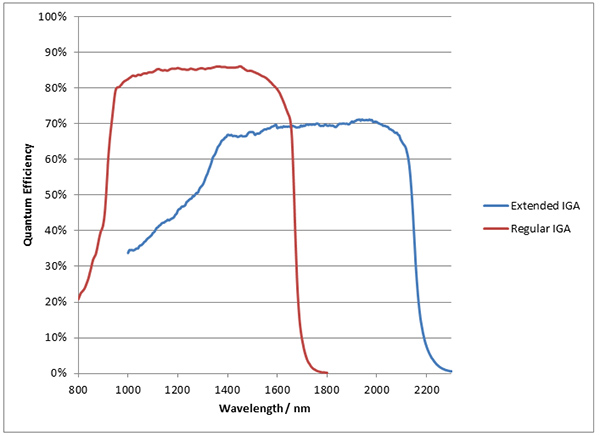
Cooling | Wavelength | Array Dimension | Element Size |
|---|
Synapse InGaAs
 | TE -60°C
-75°C with optional
external cooling View Spec Sheet | 800-1650 nm | 512 x 1
512 x 1
1024 x 1 | 25µm x 500µm
50µm x 500µm
25µm x 500µm |
1050-2100 nm | 512 x 1
512 x 1
1024 x 1 | 25µm x 250µm
50µm x 250µm
25µm x 250µm |
Symphony II InGaAs
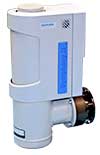
| LN2-103°C View Spec Sheet | 800-1600 nm | 512 x 1
512 x 1
1024 x 1 | 25µm x 500µm
50µm x 500µm
25µm x 500µm |
1000-2050 nm | 512 x 1
512 x 1
1024 x 1 | 25µm x 250µm
50µm x 250µm
25µm x 250µm |
